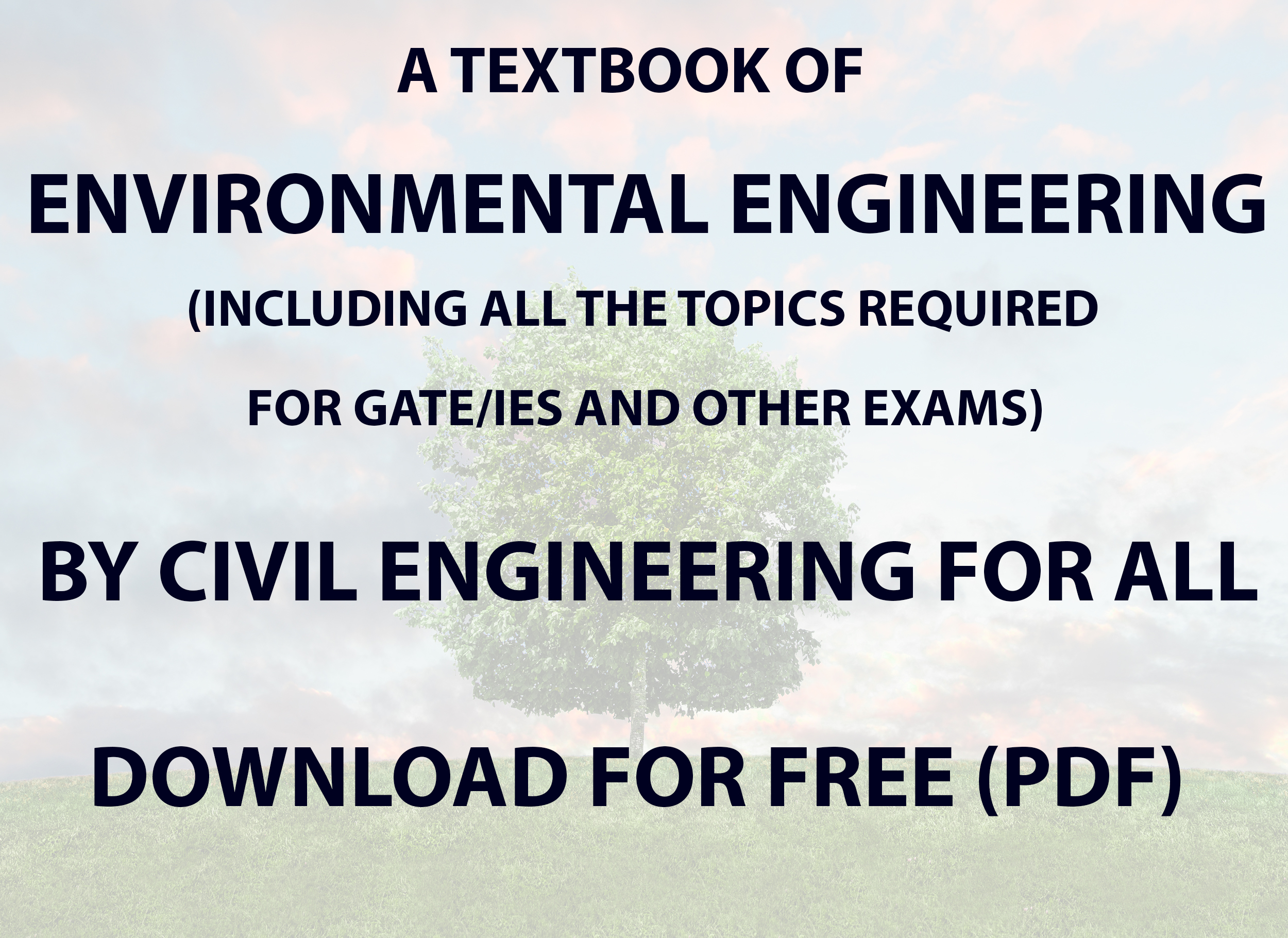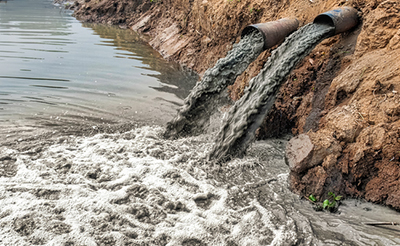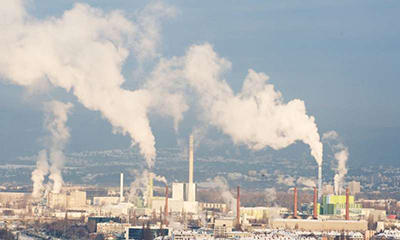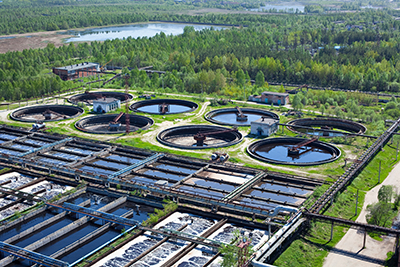

TOPICS COVERED
Environmental Engineering
Civil Engineering
Public Health
Ecology
Ethics
Environmental Engineering as a Profession
Organization of This Text
Assessing Environmental Impact
Environmental Impact
Use of Risk Analysis in Environmental Assessment
Socioeconomic Impact Assessment
Risk Analysis
Risk
Assessment of Risk
Probability
Dose–Response Evaluation
Population Responses
Exposure and Latency
Expression of Risk
Risk Perception
Ecosystem Risk Assessment
Water Pollution
Sources of Water Pollution
Elements of Aquatic Ecology
Biodegradation
Aerobic and Anaerobic Decomposition
Effect of Pollution on Streams
Effect of Pollution on Lakes
Effect of Pollution on Groundwater
Effect of Pollution on Oceans
Heavy Metals and Toxic Substances
Measurement of Water Quality
Sampling
Dissolved Oxygen
Biochemical Oxygen Demand
Chemical Oxygen Demand
Total Organic Carbon
Turbidity
Color, Taste, and Odor
pH
Alkalinity
Solids
Nitrogen and Phosphorus
Pathogens
Heavy Metals
Other Organic Compounds
Water Supply
The Hydrologic Cycle and Water Availability
Groundwater Supplies
Surface Water Supplies
Water Transmission
Water Treatment
Coagulation and Flocculation
Settling
Filtration
Disinfection
Collection of Wastewater
Estimating Wastewater Quantities
System Layout
Sewer Hydraulics
Wastewater Treatment
Wastewater Characteristics
On-site Wastewater Treatment
Central Wastewater Treatment
Primary Treatment
Secondary Treatment
Tertiary Treatment
Sludge Treatment and Disposal
Sources of Sludge
Characteristics of Sludges
Sludge Treatment
Ultimate Disposal
Nonpoint Source Water Pollution
Sediment Erosion and the Pollutant Transport Process
Prevention and Mitigation of Nonpoint Source Pollution
Solid Waste
Quantities and Characteristics of Municipal Solid Waste
Collection
Disposal Options
Litter
Solid Waste Disposal
Disposal of Unprocessed Refuse in Sanitary Landfills
Volume Reduction Before Disposal
Reuse, Recycling, and Resource Recovery
Recycling
Recovery
Hazardous Waste
Magnitude of the Problem
Waste Processing and Handling
Transportation of Hazardous Wastes
Recovery Alternatives
Hazardous Waste Management Facilities
Radioactive Waste
Radiation
Health Effects
Sources of Radioactive Waste
Movement of Radionuclides Through the Environment
Radioactive Waste Management
Transportation of Radioactive Waste
Solid and Hazardous Waste Law
Nonhazardous Solid Waste
Hazardous Waste
Meteorology and Air Pollution
Basic Meteorology
Horizontal Dispersion of Pollutants
Vertical Dispersion of Pollutants
Atmospheric Dispersion
Cleansing the Atmosphere
Measurement of Air Quality
Measurement of Particulate Matter
Measurement of Gases
Reference Methods
Grab Samples
Stack Samples
Smoke and Opacity
Air Pollution Control
Source Correction
Collection of Pollutants
Cooling
Treatment
Control of Gaseous Pollutants
Control of Moving Sources
Control of Global Climate Change
Air Pollution Law
Air Quality and Common Law
Statutory Law
Moving Sources
Tropospheric Ozone
Acid Rain
Problems of Implementation
Noise Pollution
The Concept of Sound
Sound Pressure Level, Frequency, and Propagation
Sound Level
Measuring Transient Noise
The Acoustic Environment
Health Effects of Noise
The Dollar Cost of Noise
Noise Control
Environmental engineering is a relatively new profession with a long and honorable history. The descriptive title of “environmental engineer” was not used until the 1960s, when academic programs in engineering and public health schools broadened their scope and required a more accurate title to describe their curricula and their graduates. The roots of this profession, however, go back as far as recorded history. These roots reach into several major disciplines including civil engineering, public health, ecology, chemistry, and meteorology. From each foundation, the environmental engineering profession draws knowledge, skill, and professionalism. From ethics, the environmental engineer draws concern for the greater good.
ENVIRONMENTAL ENGINEERING IES MASTER GATE MATERIAL : CLICK HERE
SOURCES OF WATER POLLUTION
Water pollutants are categorized as point source or nonpoint source, the former being identified as all dry weather pollutants that enter watercourses through pipes or channels. Storm drainage, even though the water may enter watercourses by way of pipes or channels, is considered nonpoint source pollution. Other nonpoint source pollution comes from agricultural runoff, construction sites, and other land disturbances. Point source pollution comes mainly from industrial facilities and municipal wastewater treatment plants. The range of pollutants is vast, depending only on what gets “thrown down the drain.” Oxygen demanding substances such as might be discharged from milk processing plants, breweries, or paper mills, as well as municipal wastewater treatment plants, compose one of the most important types of pollutants because these materials decompose in the watercourse and can deplete the water of dissolved oxygen. Sediments and suspended solids may also be classified as a pollutant. Sediments consists of mostly inorganic material washed into a stream as a result of land cultivation, construction, demolition, and mining operations. Sediments interfere with fish spawning because they can cover gravel beds and block light penetration, making food harder to find. Sediments can also damage gill structures directly, smothering aquatic insects and fishes. Organic sediments can deplete the water of oxygen, creating anaerobic (without oxygen) conditions, and may create unsightly conditions and cause unpleasant odors. Nutrients, mainly nitrogen and phosphorus, can promote accelerated eutrophication, or the rapid biological “aging” of lakes, streams, and estuaries. Phosphorus and nitrogen are common pollutants in residential and agricultural runoff, and are usually associated with plant debris, animal wastes, or fertilizer. Phosphorus and nitrogen are also common pollutants in municipal wastewater discharges, even if the wastewater has received conventional treatment. Phosphorus adheres to inorganic sediments and is transported with sediments in storm runoff. Nitrogen tends to move with organic matter or is leached from soils and moves with groundwater. Heat may be classified as a water pollutant when it is caused by heated industrial effluents or from anthropogenic (human) alterations of stream bank vegetation that increase the stream temperatures due to solar radiation. Heated discharges may drastically alter the ecology of a stream or lake. Although localized heating can have beneficial effects like freeing harbors from ice, the ecological effects are generally deleterious. Heated effluents lower the solubility of oxygen in the water because gas solubility in water is inversely proportional to temperature, thereby reducing the amount of dissolved oxygen available to aerobic (oxygen-dependent) species. Heat also increases the metabolic rate of aquatic organisms (unless the water temperature gets too high and kills the organism), which further reduces the amount of dissolved oxygen because respiration increases. Municipal wastewater often contains high concentrations of organic carbon, phosphorus, and nitrogen, and may contain pesticides, toxic chemicals, salts, inorganic solids (e.g., silt), and pathogenic bacteria and viruses. A century ago, most discharges from municipalities received no treatment whatsoever. Since that time, the population and the pollution contributed by municipal discharge have both increased, but treatment has increased also.


ENVIRONMENTAL ENGINEERING ACE GATE MATERIAL : CLICK HERE
MEASUREMENT OF WATER QUALITY – SAMPLING
Some tests require the measurement to be conducted at the site because the process of obtaining a sample may change the measurement. For example, to measure the dissolved oxygen in a stream or lake, either the measurement should be conducted at the site or the sample must be extracted with great care to ensure that there has been no loss or addition of oxygen as the sample is exposed to the air. Similarly, it is better to measure pH at the site if you are sampling water that is poorly buffered from pH changes (see discussion on alkalinity). Most tests may be performed on a water sample taken from the stream. The process by which the sample is obtained, however, may greatly influence the result. The three basic types of samples are grab samples, composite samples, and flow-weighted composite samples. The grab sample, as the name implies, measures water quality at only one sampling point. Grab samples accurately represent the water quality at the moment of sampling, but say nothing about the quality before or after the sampling. A composite sample is obtained by taking a series of grab samples and mixing them together. The flow weighted composite is obtained by taking each sample so that the volume of the sample is proportional to the flow at that time. The last method is especially useful when daily loadings to wastewater treatment plants are calculated. Whatever the technique or method, however, the analysis can only be as accurate as the sample, and often the sampling methods are far more sloppy than the analytical determination.
ENVIRONMENTAL ENGINEERING ACE GATE NOTES : CLICK HERE
WHAT IS TURBIDITY?
Water that is not clear but is “dirty,” in the sense that light transmission is inhibited, is known as turbid water. Many materials can cause turbidity, including clays and other tiny inorganic particles, algae, and organic matter. In the drinking water treatment process, turbidity is of great importance, partly because turbid water is aesthetically displeasing, and also because the presence of tiny colloidal particles makes it more difficult to remove or inactivate pathogenic organisms. Turbidity is measured using a turbidimeter. Turbidimeters are photometers that measure the intensity of scattered light. Opaque particles scatter light, so scattered light measured at right angles to a beam of incident light is proportional to the turbidity. Formazin polymer is currently used as the primary standard for calibrating turbidimeters, and the results are reported as nephelometric turbidity units (NTU)
ENVIRONMENTAL ENGINEERING MADE EASY GATE NOTES : CLICK HERE
COLOR, TASTE AND ODOUR OF WATER
Color, taste, and odor are important measurements for determining drinking water quality. Along with turbidity, color, taste, and odor are important from the standpoint of aesthetics. If water looks colored, smells bad, or tastes swampy, people will instinctively avoid using it, even though it might be perfectly safe from the public health aspect. Color, taste, and odor problems in drinking water are often caused by organic substances such as algae or humic compounds, or by dissolved compounds such as iron. Color can be measured visually by comparison with potassium chloroplatinate standards or by scanning at different spectrophotometric wavelengths. Turbidity interferes with color determinations, so the samples are filtered or centrifuged to remove suspended material. Odor is measured by successive dilutions of the sample with odourfree water until the odor is no longer detectable. (Odor-free water is prepared by passing distilled, deionized water through an activated charcoal filter.) This test is obviously subjective and depends entirely on the olfactory senses of the tester. Panels of testers are used to compensate for variations in individual perceptions of odor. Taste is evaluated using three methods: the flavor threshold test (FTT), the flavor rating assessment (FRA), and the flavor profile analysis (FPA). For the FTT, water samples are diluted with increasing amounts of reference water until a panel of taste testers concludes that there is no perceptible flavor. In the FRA, a panel of testers is asked to rate the flavor from very favorable to very unfavorable. The oldest, and most useful, of the taste tests is the FPA, which measures both taste and odor of a water sample in comparison to taste and odor reference standards. The intensity of specific tastes and odors are described on a 12-point, ranging from no taste or odor (0) to taste or odor (12).

ENVIRONMENTAL ENGINEERING TEXTBOOK BY CIVILENGGFORALL PDF
DOWNLOAD LINK : CLICK HERE
PASSWORD : CivilEnggForAll
OTHER USEFUL BOOKS
- BUILDING MATERIALS – MOCK TEST 1 (QUICK)
- TELANGANA STATE PUBLIC SERVICE COMMISSION – ASSISTANT ENGINEER 2023 – TSPSC AE 2023 CIVIL ENGINEERING EXAM SOLVED PAPER WITH EXPLANATIONS PDF FREE DOWNLOAD
- SSC JE 2023 CIVIL ENGINEERING (CPWD/CWC/MES) EXAM SOLVED PAPER PDF FREE DOWNLOAD
- BIHAR PUBLIC SERVICE COMMISSION ASSISTANT ENGINEER (BPSC AE) 2022 CIVIL ENGINEERING EXAM SOLVED PAPER WITH EXPLANATIONS PDF
- NHPC (NATIONAL HYDROELECTIC POWER CORPORATION) JUNIOR ENGINEER NHPC JE 2022 CIVIL ENGINEERING EXAM SOLVED PAPER PDF FREE DOWNLOAD

Leave a Reply